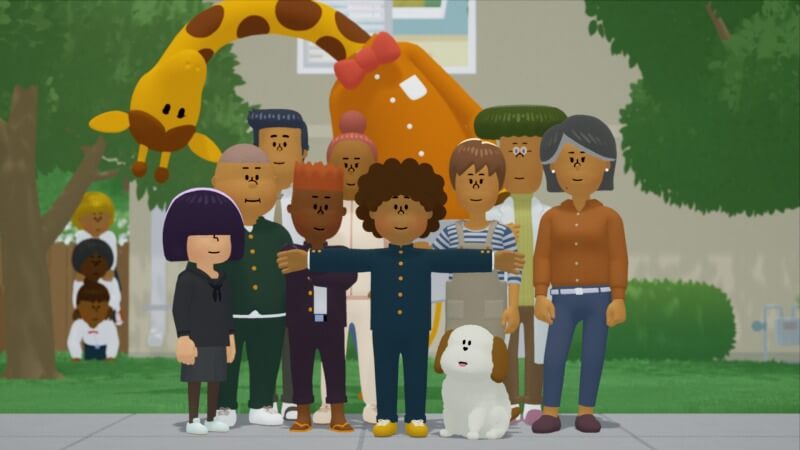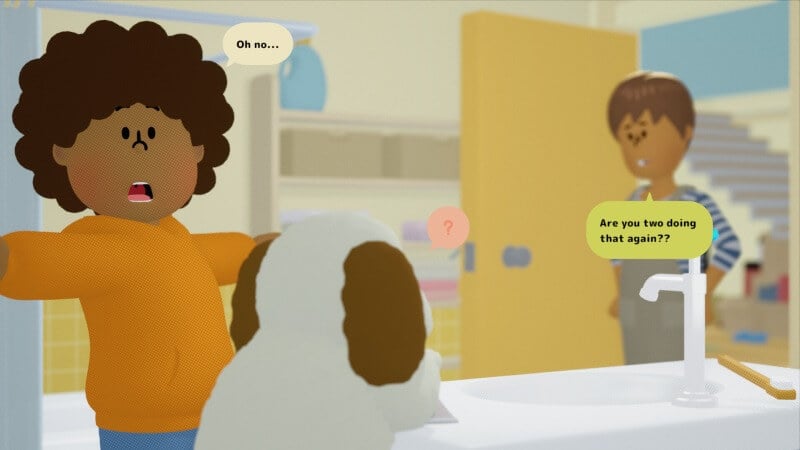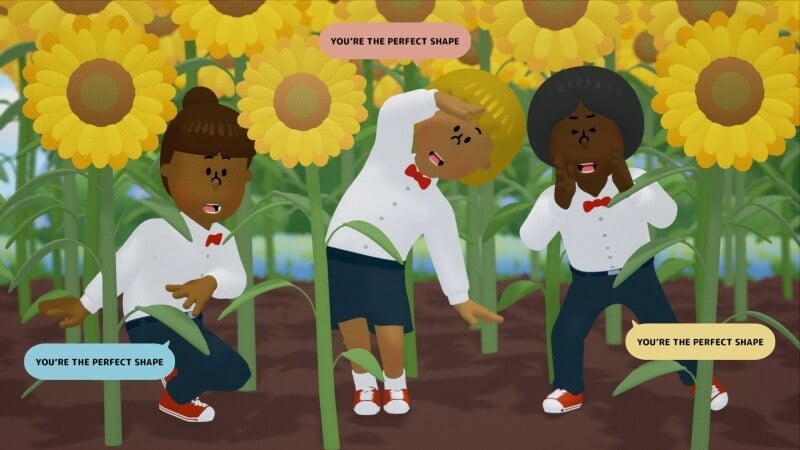Keita Takahashi’s To a T Never Quite Comes to a Point

Keita Takahashi’s newest game, To a T, is as awkward as its T-posing 13-year old protagonist. For as much charm as this slice-of-life adventure game can muster—and to be clear, it gets a lot of points between the opening and ending songs that bookend every chapter—it still just barely manages to get off the ground. Though I’m left with faintly good memories of my time with Teen, Dog, and company as they dart around their whimsical town full of odd figures, most of To a T is unfortunately relegated to thinly padded gameplay sequences patched together by similarly thin writing. Altogether, it’s a well-intentioned misfire.
It’s a shame, because Takahashi has become a name synonymous with out-there premises welded onto simplistic but nonetheless engaging mechanical romps—most notably Katamari Damacy. However, if I had to point to a core failing of To a T, it’s how little mechanical depth there is to any of it. I often felt detached from the action of the game and its story of learning to love one’s unique self because it fell short of giving me anything to chew on. I needed something to bond me to Teen, drop me into their shoes, and make me sympathize with their journey and position. I never quite felt like I got there.
At the beginning of To a T, you run through Teen’s daily routine. With their arms permanently pointed outward like an airplane, it’s hard to imagine how they do it everyday. Thankfully, with the aid of Dog, who will pick out Teen’s clothes and help them with their trousers in order to use the bathroom, as well as their mother’s innovations—including a specially engineered sink faucet and an extra long spoon—it seems pretty manageable. Rather than start at the beginning of the arduous journey, To a T plops us down firmly at its end, at which point life as Teen knows it is pretty simple and straightforward. Almost idyllic, even.
There’s a rich enough premise here for a neat little puzzle platformer, which To a T almost seems like it was meant to be. Finding bizarre solutions to puzzles on some kind of larger-than-life adventure (a thing the end of the game teases and brusquely brushes past) that make clear the significance of Teen’s unique shape feels like it would’ve aligned more with the story To a T attempts to tell for the first half of its five-hour runtime. But with everything already figured out for the player, there’s little to do but engage with the game on a kind of autopilot.

I’m trying not to knock To a T for what it isn’t, but in contrast to what it is, a boy can dream. Even by comparison to other adventure games, like Night in the Woods, there’s just very little here. You can go around collecting coins to spend at the local stores or biking from one end of town to another, but there’s nothing at the end of those pursuits. There are a number of “races,” if you’d even call them that, a handful of food-centric mini games, and you eventually unlock the ability to (kind of) fly, but the implementation of these game-y mechanics and sequences often feel hamstrung and half-baked.
Even running around and interacting with the townsfolk, like a human-sized pigeon known as DJ Pigeon, feels pretty shallow, and to complement that frustration, I felt like I was constantly warring against the game’s unwieldy camera. It became disappointingly clear early on how little there is to cling to here.
-

-

-

-

-

-

-

-

-

-

-

-

-

-

-

-

-

-

-

-

-

-

-

-

-

-

-

-

-

-

-

-

-

-

-

-

-

-

-

-









































